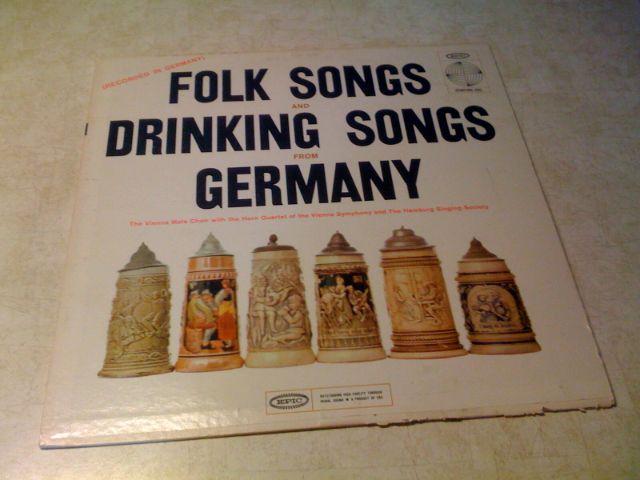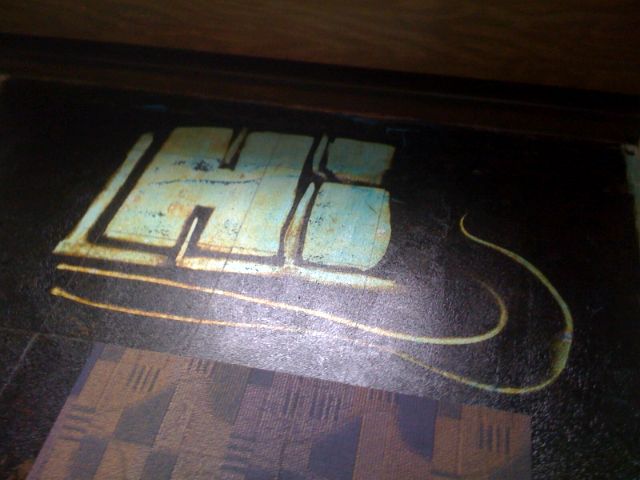Beware the pet Rancor. A sign I made for Stewart/Evans move-in. Just trying to help the community.
Monthly Archives: August 2008
Foto Zeitgeist
Ken’s German Lessons – Supernouns
Nouns are the words for persons, places, things, or abstract qualities.
In English we capitalize personal names because in America we like to raise kids to think “everyone is special in their own way.” You aren’t. Everyone has a capital letter in front of their name. You are not special. You are not a beautiful and unique snowflake. The word “I” is always going to be capitalized too.
Names of official places, offices, and points of location are also capitalized. New York, Wisconsin, Honolulu, Lake Titicaca, Fire Department, Triangle City Square, Wal-Mart Avenue, and Dave’s Discount Urologist Megamart/Payday Loans. Got it? Super.
So are formal titles like our last unquestionably and legitimately elected Commander in Chief, President Clinton. As far as I’m concerned Mr. Bush is about all the respect the current guy holding the office deserves. When Senator Obama is elected we will refer to him as President Obama. If Senator McCain is elected I will seek asylum in Germany.
Writing the noun for another foreign language needs to be capitalized. English, German, Spanish, Russian, Chinese, Newspeak, etcetera ad nauseum until English is the only language left due to globalization.
All other things and abstract qualities that make up the rest of all nouns are not capitalized. Unless it appears as the first word in a sentence, then “noun” isn’t even capitalized. English is cruel and confusing like that.
So what makes German nouns, or Übernomen as I like to call them, superior to English nouns in every way?
In German a Nomen (noun) is always capitalized (notice how I capitalized Nomen earlier in the sentence. Awesome.). Capitalize just the first letter though. Otherwise you run the risk of being one of those ANNOYING PEOPLE WHO FALL ASLEEP ON THE CAPS-LOCK KEY when you write. German words for people, places, things, and abstract qualities all are capitalized no matter where they appear in a sentence. A Nomen is easier to spot in German than in English because 99% of the time it is going to be capitalized. The remaining 1% are reserved for Apple products like the iMac, iPod, iPhone et al.
Let’s take a look at some Nomen in this sentence. Grab a Sharpie marker and circle the Nomen on your computer screen.
Günther Rockmysocksoffenstein (name) besuchte Berlin (place) mit seiner Gitarre (thing) und Schwanken (abstract and questionable translation to follow).
Günther Rockmysocksoffenstein (name) visited Berlin (place) with his Guitar (thing) and swagger (abstract).
German also has a peculiar rule when it comes to nouns. If you are a boy read Boy Paragraph A, if you are a girl read Girl Paragraph B.
Boy Paragraph A:
Remember when you were a young boy and you would mash two toy cars together simulating a horrible accident? Well imagine that each car is a noun. Now mash the two noun-cars together. Walla! The horrible pile of shorn metal you’ve smashed is now one whole new noun – a.k.a. compound noun.
Girl Paragraph B:
Remember when you were a young girl and you would put your Barbie dolls on top of each other pretending they were kissing? Well imagine that Barbie and Ken each symbolized a noun. Now mash their lips together and wait nine months. The love-child-noun that Barbie and Ken created is a new word entirely – a.k.a. compound noun.
A compound noun is two German Nomen mashed together. It is theoretically possible to mash as many coherent nouns together to adequately describe the intricate details of a person, place, thing, or abstract quality.
One such legitimate example would be: Donaudampfshiffahrtsgesellschaftskapitaenskajuetenschluesseloch
This would roughly translate to: The keyhole of the door of the cabin of the captain of a steamship company operating on the Danube
The primary piece of advice Douglas Adam’s Hitchhiker’s Guide to the Galaxy gives us is “don’t panic.” This is meaningful advice in this scenario as most German compound nouns are not that long. Most are a logical combination of just two or three words.
Try to guess what you get when you combine the German word for “main” and “city” together. Haupt + Stadt = Haupstadt or capital city. Let’s try it with three words crammed into one. Take the German words for “arm” and “band” along with “clock.” Arm + Band + Uhr = Armbanduhr or wristwatch. You can see in Hauptstadt and Armbanduhr that only the first letter is capitalized. This is true for all compound nouns. Writing HauptStadt and ArmBandUhr would be incorrect.
Be aware that compacting words together and guessing at their logical meaning is not always so easy. One of my favorite Nomen has no real definitive English translation. That word is Schadenfreude. As a compound noun Schadenfreude is comprised of the words for “to harm/do damage” and “joy/happiness.” Schaden + Freude = Schadenfreude or “the enjoyment of another’s pain or suffering.” Why do you laugh when you see a home video of someone getting hit in a sensitive area during ABC’s primetime TV programming? It is a bit of an abstract concept, but that is what Schadenfreude is. You laugh because someone else got hurt.
Example:
Ich sah in dem Fernseher Bob Sagets Hoden geschlagen und fühlte Schadenfreude.
I saw Bob Saget’s manbits get clubbed on TV and it made me feel (a guilty kind of) happy.
Perpetual capitalization and the intimidation factor presented by compound nouns are why German nouns are superior to English nouns in every way fathomable. If you think that’s the end of it, you would be wrong. There is even more to the Übernomen that I have not covered. Nomen have a feature that is absent in English, namely the assignment of one of four possible genders. That, my friends, will have to wait for another day. I just blew your minds and you’ll need some time to clean the itty bits of brain from the inside of your skull.
Addendum: Nomen is not to be confused with the club NoMen on 19th and Harrison Avenue down by the docks. I totally made a fool of myself trying to pick up chicks there once. The dance music was really good though.
Corrections and suggestions are welcome via the comments.
Foto Zeitgeist
Wish List: Apple Edition
There is a certain aesthetic about old Macintosh computers that I love. Each subsequent model is an improvement upon its predecessor. With each successive model the influence on design and use is observable. Machines from the 1980’s still function as they did out of the box. Try to find a bland beige-box PC from the era and compare.
This last week my collection of Apple computers crossed a baker’s dozen. Christmas is coming up and this year I’m wishing to expand my collection. Instead of shiny new things I want old, dingy, and used. eBay ahoy!
1. The Macintosh
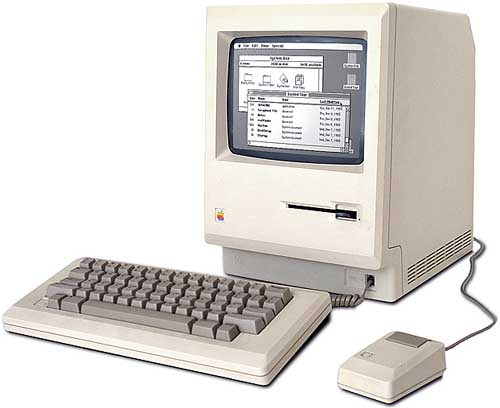
This is the one that started the desktop revolution in 1984. The whole Macintosh operating system fit on a 400k disk along with its applications. In comparison the average single MP3 music file today is about 5mb or 5,120k. Despite this storage limitation the Mac was the first computer to have an easy to use animated interface and brought desktop computing to the masses. As the years went on the Macintosh was upgraded periodically. These computers are lovingly referred to as “Toaster Macs” for their all-in-one appliance Gestalt.
They come in a variety of flavors, some of which I already own. In order of lust these are the ones I’m seeking to add to my racks-o-Macs.
- Macintosh 128
- Macintosh SE/30 (the Corvette of Toaster Macs)
- Macintosh Classic II
- Macintosh 512
- Macintosh Plus
Watch for: extreme case/keyboard/mouse yellowing
Price: $75-300+
2. The Apple IIc

I remember in sixth grade when one of my classmate’s family donated the Apple IIc. It was functionally no different than the regular Apple II we had. It ran all the same MECC (Oregon Trail, Odell Lake, Number Muncher) software. It ran that stupid tracking/testing program that monitored our required reading that led to many missed recesses. Nevertheless people fought each other to get on it. Why? Because the thing look crisp, white, and like it was from the future. Of all the Apple II models that came out over the years the IIc and its variants are the most aesthetically pleasing.
Beware of: must include monitor
Gold: $40-80
3. Macintosh Color Classic
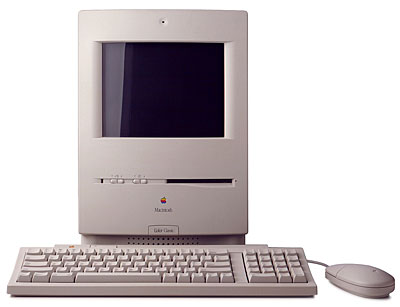
I have never actually seen one of these machines in person. I’ve only heard collectors rant and rave about how much they love this machine. The beautiful color screen has the ability to display some of the earliest Quicktime movies. If I had one of these machines I would string an ethernet connection to it and put it through its paces. It is the spiritual predecessor to the iMac and I would love to have one in my collection.
Note: case yellowing, screen functions
Dough: $100-150
4. iBook G3
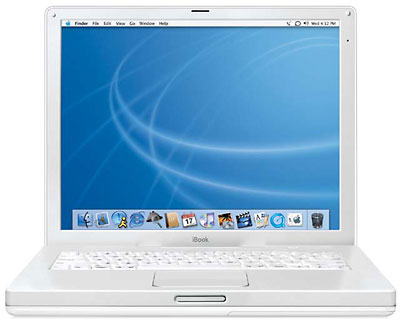
The 12″ iBook G3 was perhaps the worst laptop in terms of quality control they ever released. I owned two of these beasts secondhand. Both received free logic board replacements courtesy of an official recall during the course of their useful lives. In both cases my 600 MHz processor was upgraded to 700 and later 800 MHz. Overheating on the motherboard eventually caused one of the chips to raise out of its socket and fail. While I was studying abroad in Germany my later iBook began exhibiting the same problems that had caused the first one to tank completely. For four months I put up with random freezes, crashes, and errors. As my only means of contacting people back home I was desperate to keep the machine running. With only a toothpick, a small screwdriver, a lighter, some tape, and my bare hands I kept that white monster going. Two days before I was scheduled to return home the computer finally took a fatal dive and never came back on.
Despite all that hardship I’ve developed a deep-seated love for this model of laptop. It’s simple design truly embodies what a laptop should be. Simple, small, portable, capable, and road-ready. Apple fixed most of their overheating issues with the G4 iBook. But I still have a sentimental attachment for the G3 model.
Achtung: dead pixels, cracked/scratched outer casing
Shekels: $200-400
5. Newton MessagePad 2000/2100

Before dropping the cold hard cash for an iPhone 3G I seriously considered purchasing a Newton MessagePad 2000/2100 to play with. This device was, in typical Apple fashion, way before its time in 1996-98. The Newton featured a touchscreen, handwriting recognition, expandability options, and the ability to tether an internet connection for web and e-mail applications. In fact it still has a large cult following with developers still writing applications.
Observe: included keyboard, memory cards, adapters, screen cover
Monies: $75-250



